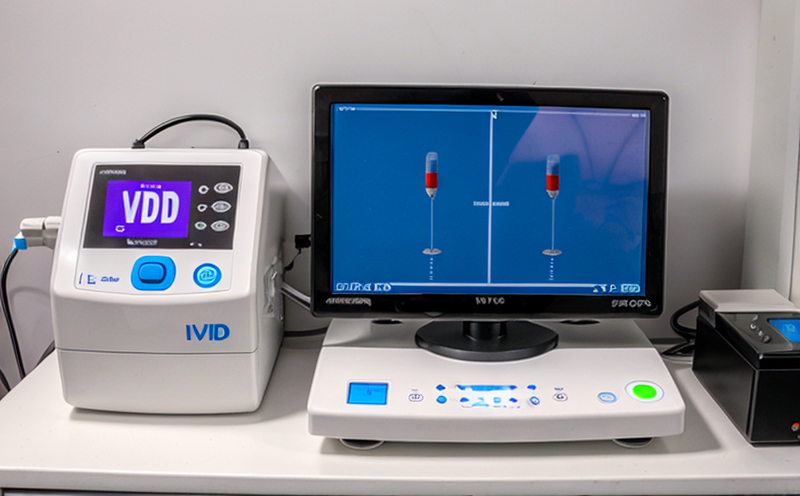Analytical Range Testing for IVD Devices
The analytical range of an In Vitro Diagnostic (IVD) device is a critical parameter that ensures accurate and reliable test results. This service involves the comprehensive evaluation of how accurately and precisely an IVD device performs across its specified concentration or amount range, which is essential for ensuring patient safety and effective healthcare delivery.
During analytical range testing, we analyze various concentrations of analytes within the expected clinical ranges to assess performance characteristics such as linearity, precision, accuracy, limit of detection (LOD), and limit of quantitation (LoQ). This ensures that the device can accurately detect analyte levels across its intended concentration spectrum. The test also evaluates how the device behaves at extreme concentrations, both above and below the expected clinical range.
Our laboratory uses state-of-the-art instrumentation to perform these tests, ensuring high precision and reliability in our results. We follow international standards such as ISO 15195-2, which provides a framework for performance evaluation of IVD devices. This standard ensures that we adhere to the highest industry practices.
The analytical range test is crucial because it helps identify any potential issues with the device’s accuracy and precision at different points within its concentration range. It also helps in understanding how well the device can handle extreme conditions, which could be encountered in real-world clinical settings. This testing ensures that healthcare professionals can trust the results they obtain from these devices.
Moreover, this test is a key component of the overall performance evaluation process for IVD devices. By ensuring that the analytical range meets the required specifications, we contribute to maintaining high standards of patient care and compliance with regulatory requirements.
In summary, analytical range testing for IVD devices is an essential step in validating the accuracy and reliability of these diagnostic tools. This service ensures that healthcare providers can rely on the results obtained from IVD devices, leading to better-informed decision-making and improved patient outcomes.
Applied Standards
The analytical range testing for IVD devices adheres to several international standards that are widely recognized in the medical device industry. These include:
- ISO 15195-2: This standard provides a framework for the performance evaluation of IVD devices, including analytical range tests.
- AAMI T10: The Association for the Advancement of Medical Instrumentation (AAMI) Technical Committee on Diagnostics and Laboratory Instruments publishes this standard, which covers the requirements for in vitro diagnostic medical devices.
- ASTM E2586: This American Society for Testing and Materials standard provides a guide for the performance evaluation of IVD analyzers.
These standards ensure that our testing process is consistent with global best practices, thereby enhancing the credibility and reliability of our results.
Benefits
By conducting analytical range testing on IVD devices, we provide significant benefits to our clients:
- Enhanced Accuracy: Ensures that the device can accurately measure analytes across its specified range, leading to more reliable diagnostic results.
- Improved Precision: Reduces variability in test results, which is crucial for consistent and accurate diagnoses.
- Compliance with Regulations: Ensures adherence to regulatory requirements, facilitating easier market access.
- Risk Reduction: Identifies potential issues early on, reducing the risk of errors that could impact patient safety.
- Enhanced Patient Trust: By providing accurate and reliable test results, we contribute to higher levels of trust between healthcare providers and patients.
- Improved Clinical Outcomes: Accurate diagnostics lead to better-informed treatment decisions, ultimately improving patient outcomes.
- Simplified Compliance Processes: Our testing aligns with international standards, making it easier for clients to comply with regulatory requirements.
In summary, analytical range testing is a critical step in ensuring the accuracy and reliability of IVD devices, providing significant benefits that enhance patient care and compliance.
Why Choose This Test
Choosing analytical range testing for your IVD device can offer numerous advantages:
- Precision and Accuracy: Ensures that the device can accurately measure analytes across its specified concentration or amount range.
- Compliance with Standards: Adherence to international standards like ISO 15195-2 ensures that your testing process meets global best practices.
- Risk Mitigation: Identifies potential issues early, reducing the risk of errors in clinical settings.
- Enhanced Reliability: Provides consistent and reliable test results, which are crucial for accurate diagnostics.
- Facilitated Compliance: Simplifies the process of meeting regulatory requirements, streamlining your compliance efforts.
- Patient Safety: Ensures that healthcare providers can trust the results they obtain from these devices, leading to better patient outcomes.
- Reputation Enhancement: Demonstrates a commitment to quality and reliability, enhancing your reputation in the industry.
In conclusion, analytical range testing is an essential service that ensures the accuracy, precision, and reliability of IVD devices, providing significant benefits for both clients and patients.





